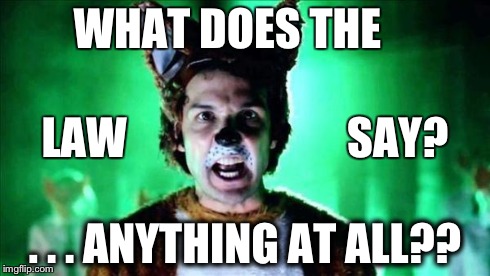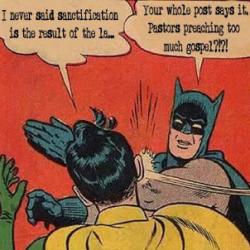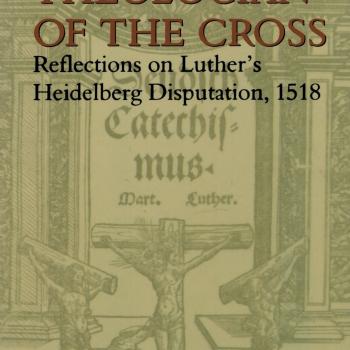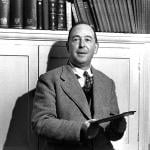Do you like what you read here? Does it pique your curiosity? Use the link above or click here to buy Dr. Murray’s book.
The more I delve into his research and footnotes, the more I am convinced that this is a very important bit of scholarship that we Lutherans would do well to study, now more than ever.
Educate your children classically. Minds like Murray’s don’t just happen. — TDD
+ + +
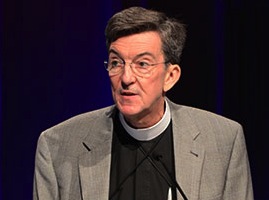
Gerhard Forde made an enormous contribution to the discussion about the third use of the Law through The Law-Gospel Debate, a work that reviewed the 19th-century debate between orthodoxy and Heilsgeschichte over the doctrine of the atonement. Forde maintains that this debate in the Erlangen school set the parameters for the modern discussion on the relationship between Law and Gospel. He suggests that understanding the weaknesses of both orthodoxy and Heilsgeschichte would clarify the modern dogmatic problem of situating the Law in Christian doctrine.
When the Prussian government attempted to unite Reformed and Lutheran churches at the beginning of the 19th century, interest in Lutheran theology revived in Germany. The revival of Lutheranism was characterized by intense interest in and support for orthodoxy. E. W. Hengstenberg was a prime example of someone who supported the orthodox revival. Hengstenberg worked tirelessly as a teacher and a church politician to revive the orthodox doctrine of the atonement and to repair the damage done to theology by rationalism. According to Forde, Hengstenberg and his orthodox colleagues simply substituted one form of rationalism for another. Rationalism had championed the human mind’s perception of truth in all things, including theology. Rationalism sought “scientific” objectivity in the universally valid truths discernable by reason. Hengstenberg merely shifted the source of objective knowledge from the human mind’s use of reason to the text of the Bible. The authority of the Bible was absolute for Hengstenberg.
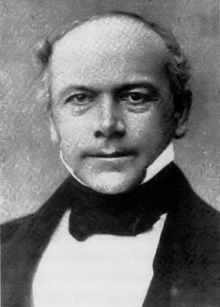
This is the point at which J. C. K. von Hofmann entered the fray by criticizing the orthodox for objectifying the relationship between God and humans. Hofmann attacked the biblicism of orthodoxy and, therefore, the whole theological edifice built on the orthodox method. Hofmann was critical of the way in which the Law gave orthodoxy its shape, including regulating the content of the Gospel itself. He criticized orthodoxy for its doctrine of the vicarious satisfaction, excoriating it for attributing to God a system whereby God may be “bought off” through an expiatory sacrifice of Christ. Since the Law required perfection of sufficient quality and quantity, God had to provide it in Christ, who became a perfect substitute for the sins of the world, taking the world’s punishment on himself. The satisfaction requires God to render a verdict of “not guilty” for the world. The transaction of the vicarious satisfaction was a prime target for Hofmann. The Law gave the whole doctrine of justification its shape and framework in the orthodox system. This was not acceptable to Hofmann.
Hofmann proposed that Christ became the true human instead of a substitute. “He did not suffer alongside of man, as one man instead of another, but in mankind. In him, not merely through him, man becomes the object of divine love.” Hofmann focused his atonement doctrine on the new humanity made complete in Christ. In the Heilsgeschichtliche method of Hofmann, Christ became the greatest manifestation of the unfolding of the plan of divine love. The Heilsgeschichtliche method replaced Law with the idea of the new humanity. “There is no trace of the traditional idea of the lex aeterna, no trace of the traditional scheme of the usus legis and no hint of a ‘third use of the Law.’ Law is displaced entirely by the reality of the new humanity.”215 The method was driven by the idealistic philosophy of history brought to its apogee by G. W. F. Hegel. The Law, and especially the third use of the Law, cannot survive Hofmann’s criticism.
Several proponents of orthodox theology, including Friedrich Adolph Philippi, Gottfried Thomasius, and Theodosius Andreas Harnack, seriously challenged Hofmann. Philippi criticized Hofmann for supporting a doctrine of the atonement that was far too subjective and, therefore, uncertain. Philippi charged that Hofmann’s doctrine had more in common with Roman Catholicism than Lutheranism because in Hofmann’s doctrine the change in the atonement took place in humans. Hofmann took the criticism seriously and set about defending his doctrine from the charge of subjectivism. He recognized that the change that was affected in the atonement was not solely in humans.
It is God’s relationship to man which has changed in the atonement, and it is changed objectively, if one must use such terms, and in and through what is accomplished by God in Christ. In acting this way through Christ, God has not exercised his will to love mankind without at the same time exercising his hatred of sin. What has occurred is a change in dispensation, a real and “objective” change in the “times” which changes man’s relationship to God. Of course, the change has not occurred “objectively” in the sense that the old dispensation has been obliterated.
Hofmann argued that Law was not lex aeterna, but only a part of the historical dispensation that led persons to take seriously the love that God holds for them. The debate between Hofmann and the orthodox reached a stalemate when the problem of the place of the Law in theology could not be resolved. This is the point at which Forde takes up his critical analysis of the place of the Law in what he calls “the theological system.”
Both Hofmann and his opponents had difficulty accounting for the place of the Law in their theological systems. According to Forde, the 19th-century debate showed that the orthodox could no longer understand the Law “in a static-ontological sense, as a lex aeterna according to which God can be ‘bought off.’” In his opinion the Heilsgeschichte doctrine fared no better.
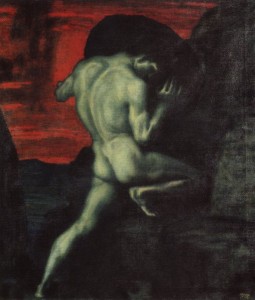
Clearly, the “Law could not be treated as though it were part of a historical dispensation superseded by a dispensation of love.” In either case, the radicalness of the work of God to save the world was being blunted by placing that work in a system where the outcome was assured. The orthodox system assured the results to be realized by the death of Christ through the Law’s demands upon God’s righteousness. Ultimately, both God and the cross were captured in the theological system. The Heilsgeschichtliche method simply substituted for the orthodox doctrine of the Law a concept of divine love progressively revealing itself through the stages of history—a view of history borrowed from Hegel, to whom Hofmann was intellectually indebted. Both ways failed because the assured results “detracted from the seriousness of the cross event itself.” Thus, for Forde both Hofmann and the orthodox had developed theories about the cross but had failed to present the existential reality of the cross itself.
The systems generated in the 19th century made the cross anticlimactic. Whether it was the Jesus portrayed by the orthodox or the Heilsgeschichtliche method, Jesus knew the systematic details and, therefore, could face death with prosaic equanimity, knowing as he did what the assured outcome would be. For Hofmann, Jesus would have known that he was unfolding another aspect of divine love for the world. There would be nothing new and, therefore, nothing central about the cross. The cross becomes merely one way of revealing God’s love in holy history. For the orthodox, Jesus easily faced the cross because the Law assured that the results would be accepted. Because the results would be accepted, there was a note of inevitability in the resurrection of Jesus. Real suffering and death are cut off in this scheme. Both Heilsgeschichte and orthodoxy are ultimately tainted by a docetic Christ who knows that everything will turn out nicely in the end if the theory is followed correctly. This theorizing about the cross destroys its power and meaning in the life of the church, according to Forde.
Ultimately, Hofmann did not repair the problem of the static-ontological view of the Law. Forde stated that Hofmann simply replaced the orthodox view with the idealistic view of historical progress, that is, another equally certain systematic framework in which to capture the work of God in Christ and ultimately to destroy its existential freshness. “In the shift from the legalistic scheme of orthodoxy to a scheme based on historical process, the continuity or idea of progress accomplishes the same function as Law in the system of orthodoxy—it provides the structure for understanding the Christ event.” For Forde, Hofmann missed the radical break with the old era that the cross represented. The key to the problem of understanding the cross was the eschatological newness of the Christ event, something obscured by both orthodoxy and Heilsgeschichte.
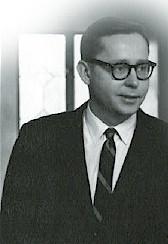
+ + +
Forde attempted to resolve the problem he identified through his analysis of the atonement debate of the 19th century by suggesting that eschatology holds the key. Forde claimed that Lutheranism’s placement of the cross at the center of the faith dwarfs the Law. The cross stands astride all of time and calls a halt to the Law’s work. The cross is the eschatological sign of temporal discontinuity. The Law belongs to the old time. The Gospel belongs to the eschaton. The temporal order is central: Law comes and then Gospel.
For Forde there is nothing rationalistically self-evident about the function of Law and Gospel. The distinction between Law and Gospel is apparent only to faith. “There is no possibility of speaking about Law and Gospel prior to faith. At the same time, however, it is apparent that it is precisely faith which grasps the Gospel as God’s final Word and that from this standpoint Law must be ordered before Gospel.” The cross’s division of time into two radically different ages shapes the whole Law-Gospel dialectic by giving temporal order to it.
Quite obviously it is only by faith in God’s eschatological act that the believer sees that his existence must be understood in terms of the two ages, where being in Adam under the Law is always before being in Christ under the Gospel. Faith grasps the Gospel as God’s “last Word”; thus it places Law before Gospel.
For Forde the eschatological character of God’s self-revelation provides a limit to the action of the Law in the world. The limit is theological. Therefore, it is an insight that can be reached only in faith. The limit is also temporal. Therefore, it is indicative of the eschatological discontinuity introduced by the cross. Since this eschatological approach is only known “by faith,” it should not have any of the systematic flaws that Forde identified in orthodoxy and Heilsgeschichte.
At this point, Forde presented the theoretical possibility of a third use of the Law to evaluate its impact on Christian doctrine. A reintroduction of the Law at the point of the cross results in a blurring of the sharp division between the times and of the distinction between Law and Gospel. “It might be objected, however, that if one does grasp the eschatological dialectic of the ages and all that that means, then it is a relatively harmless thing to speak of another use of Law after the Gospel, perhaps a ‘third use’ of the Law.” The problem here is that after the cross, Law would require such radical redefinition that it would no longer be recognizable as Law. Law might be understood as the “admonitions of the Gospel,” but Forde denies that there is anything gained by such language. The history of the third use of the Law, rooted as it is in the doctrine of the lex aeterna, gives no hope for this kind of theological language to advance a Gospel-centered ethic. Such an approach would only “impose a new kind of legalism.”
The radical discontinuity between the old age and the new age makes even Paul Althaus’s proposal of a third possibility beyond Law and Gospel untenable. Gebot is a Trojan horse for the third use of the Law. Interestingly, Forde criticizes Althaus for the division of time into a threefold scheme—before the fall, after the fall, and after conversion. “Althaus’ scheme presupposes the believer’s ability to place himself beyond the real threat of the Law simply by disposing of it in a neat Urstand, fall, and Endzeit scheme.” Forde thought that Althaus’s scheme failed because it rendered the Law a harmless word from God. In other words, it entailed an implicit denial of the semper accusat.
In contrast to all attempts to rescue a “third use of the Law,” there was no way to rescue the larger concept of the Law in the new age. “It seems quite evident, however, that once the eschatological character of revelation has been asserted, the Law which is now to be used in a ‘third way’ must be redefined so radically that it bears little or no relationship to the former uses whatsoever.” Forde is quite correct in warning against a Law that has been redefined in this way because the redefinition is usually in terms of attributing Law concepts to the Gospel, resulting in Gospel as admonition or ethical instruction. According to Forde, the greater problem is that either any third use is so unlike the “old uses” that it ceases to be Law altogether, or it becomes a tertium quid, as in Althaus’s approach, “which is after all only the old way in disguise.”
The eschatological approach to the relationship between Law and Gospel precipitated a crisis for the doctrine of the Law. “The assertion of the eschatological character of revelation has created a crisis for the doctrine of the Law, a crisis so severe that one can perhaps speak even of a bankruptcy in the attitude of Protestantism toward the Law.” Law, of whatever kind, has no place in the time created by the eschatological discontinuity of the cross.
Forde proposes that the nature and function of the Law can be understood only in terms of the eschatological dialectic shaped by the intrusion of the cross. Forde gives the Law a purely functional definition.
Law is a general term for the manner in which the will of God impinges upon man in the old age, both in nature and in the words of Scripture. It is the demand and the judgment which confront him as a sinner. Even the words about the cross will initially be heard as demand, as a threat to his being. It is important to note here the Law is defined almost exclusively in terms of its function. Nature and function are taken together. The nature of the Law is that it terrifies.
In this view, the Law has no place in the age defined by the cross. The Law is relegated to the old age. Ultimately, Law is what terrifies and what terrifies is Law. “Nothing material is said about the content of Law as such; that, apparently, may depend upon concrete circumstances.” The Gospel’s task is to quiet the existential terror of the human heart. Here the Law can have no place. The eschatological dialectic governs the relationship between Law and Gospel.
Because the Law is set in the old age with its unfaith, nothing certain can be said about its content. The Law is merely and entirely a threat to being. Thus, the person does not know what a correct course of action would be in any given situation.The person only feels the unease caused by the threat of the Law. Even the Decalogue is only a proximate guide in any given situation.
The Decalogue is the best statement of natural law. If man does not know the Law, he must be taught. But on this level, within the old age, it remains, it would seem, only a question of the relative appropriateness of a course of action in a given situation.
The Decalogue, then, is a general guide to action useful only in a situational context. This approach to the Decalogue is characteristic of existential ethics.
Forde provided a clear summary of the battle between orthodoxy and Heilsgeschichte. He is correct in seeing that the battle was ultimately being waged over the place of the Law in theology and its relationship to the Gospel. Existentialism gave him the framework to criticize these historical approaches and to make suggestions about the place of the Law in Christian theology. Forde provides much to consider. Once again existentialism is as much an intellectual or systematic framework for thought as any framework provided by the orthodox or Hofmann. Forde distinguished his view of the death and resurrection of Christ from the point of view of Hofmann and the orthodox in such a way that he implied that his eschatological point of view was not fraught with the difficulties inherent in being a systematic theme. “There is no ‘system’ as such which can distinguish between the ages or can provide a continuous transition from this age to the next. Only the death and resurrection of Christ, the act of judgment and grace, is ‘the way.’ ” However, existentialism is as much a point of view as orthodoxy or Heilsgeschichte. An existential approach to Christian theology is not value neutral. Existentialism values being-in-existence over being-in-substance. Hence the static view of Law as lex aeterna is immediately ruled out.
While this is to be expected given Forde’s existential presuppositions, there is something too neat about his bifurcation of time into “before the cross” and “after the cross.” Certainly the cross is the source of eschatological discontinuity. The intrusion of the Gospel into the world has a radical effect upon the Law and its significance. In this sense the temporal order should be Law, then Gospel. Yet Forde has allowed his eschatological viewpoint to define how Law and Gospel relate to each other and how they function within Christian theology. Forde seems to have carried out a misordering of traditional Lutheran priorities, where Law and Gospel is the overarching theme that gives shape to the Lutheran theological enterprise. In Forde’s approach, eschatology has become that overarching theme. Therefore, he has presented a strictly temporal ordering of Law and Gospel.
The temporally ordered eschatological approach is helpful. Yet if it excludes other legitimate emphases, it is pushed beyond its usefulness. Missing in Forde’s eschatological perspective is the significance of the sinner’s real, and even existential, situation as simul justus et peccator. Forde’s contention that the eschatological approach is thinking theologically about Law and Gospel is susceptible to the criticism that it is just thinking temporally, and not theologically at all. The temporal order of Law and then Gospel fails to take seriously the proleptic eschatological reality of the “now and not yet” character of the Christian life. This is a clear theme in Scripture and gives us another dialectical tension with which to balance Forde’s temporal “before and after.” Forde fails to account for the character of the Christian as simul—at the same time righteous and sinner. In this way he has ignored the significance of the subject of Christian theology, the person. This is not to say that there are not times when in Christian theology the order is rightly Law then Gospel. Often in proclamation that is the order that must prevail. However, Christian “being” remains being in the simul. Law and Gospel are both involved, but the question remains, How is the Law involved in this mode of being? The third use of the Law still emerges as the response to the dilemma, without denying the ever-present semper, as a judgment against human unfaith.
Forde uniquely avoids the confusion of Law and Gospel that seems characteristic of those who deny the third use of the Law. The sharp temporal distinction of his eschatological approach keeps him from heading down this road. In fact, he is critical of all attempts to reintroduce the Law after the cross or the Gospel. Forde struggles to resolve the problem of the relationship of Christian theology and ethics. He suggests that the problem of the Christian life is one of ontological understanding. “In the church the believer comes to understand his existence in terms of two ontological determinations of his being, being ‘in Adam’ and being ‘in Christ.’” How the “ontological determinations” relate to the existential character of being in faith, Forde does not say. In any case, given the existentialistic tenor of Forde’s work, the introduction of an ontological category at this point is methodologically weak at best. The introduction of ontology here is even stranger since he has criticized the orthodox approach to the Law because of its static-ontological character. Because of this, it is quite uncertain what Forde means by “ontological” at this point. Ethics remains a groping enterprise, enlightened only by the existential situation. The third use of the Law, in whatever form, does not escape the criticism of the existential approach to Lutheran theology. Forde categorically denies the third use of the Law any place in the Lutheran theology.
SUMMARY ANALYSIS AND EVALUATION
The influence of existentialistic Luther scholarship and European theology shows in the work of the ELCA theologians during the period of 1961 to 1976. ELCA theologians still generally accepted the existential theological framework already in evidence in the previous period. As they applied it to their theology, they even suggested that existentialism was a neutral method, not carrying its own presuppositional freight. As was shown in the previous period, this approach has devastating effects on the third use of the Law because it calls into question the use and validity of the Law in the entire Christian theological endeavor.
Murray, Scott R. (2001-10-01). Law, Life, and the Living God (Kindle Locations 2833-3017). Concordia Publishing House. Kindle Edition. All emphases Murray.
+SDG+

